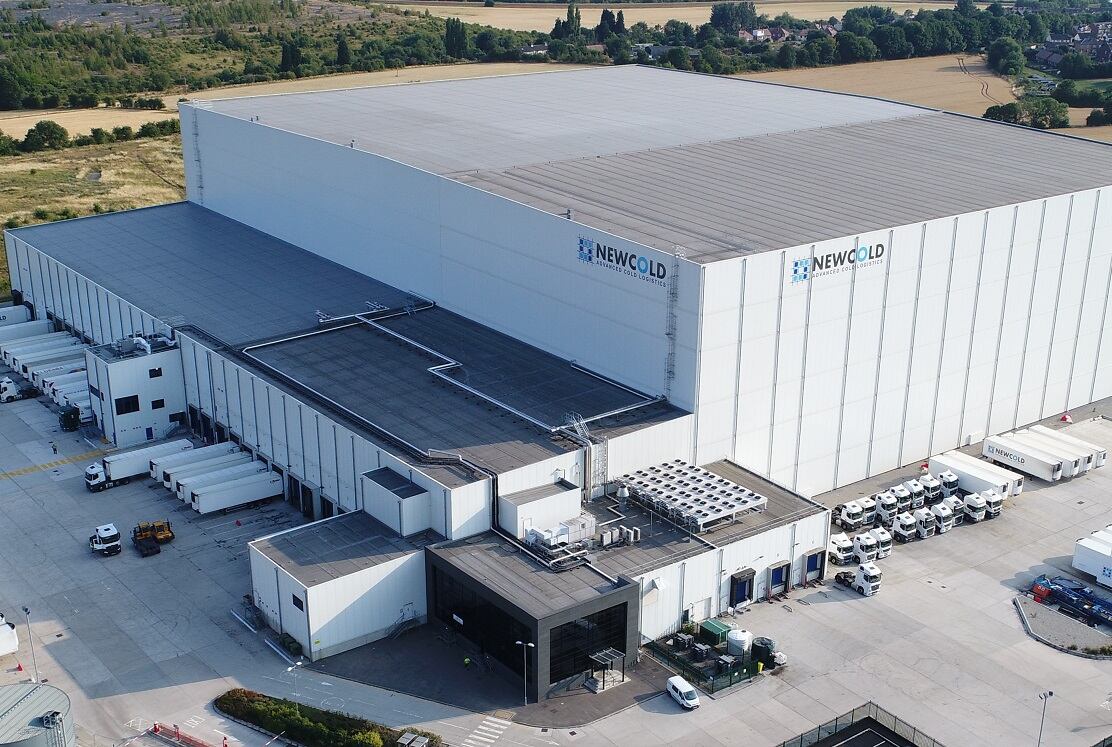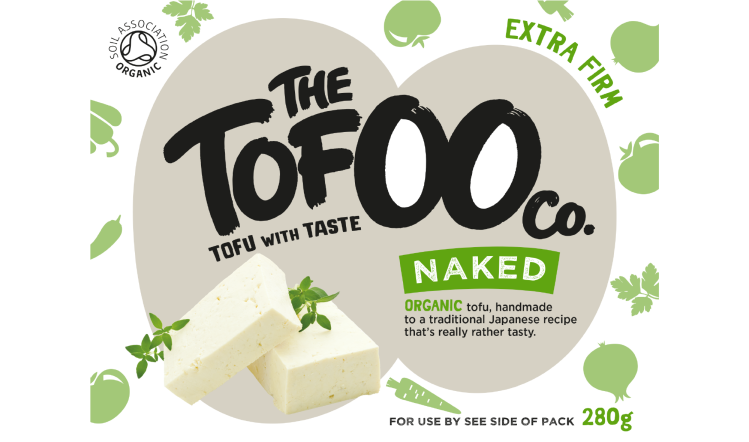According to a report by Savills, undertaken in collaboration with the Cold Chain Federation (CCF), cold storage in the UK accounts for an estimated 12% of total warehouse space. A further 1.6 million m2 is currently under construction to cater for growing occupier demand.
Netherlands-based NewCold is one advanced cold logistics supplier contributing significantly to efforts to boost UK capacity. Preparations for its second UK deep freeze storage facility, in addition to its existing Wakefield site, are on course, says the company and after construction began in October, it is expected to go live just one year later.
Based in Corby, the facility sits on a 23-acre plot. Country director Jon Miles says it's a prime location in the logistics ‘golden triangle’, with proximity to frozen distribution centres of large retail and foodservice customers and perfectly located to help customers reduce food miles and cut costs.
Corby ideally situated
Even though its Wakefield hub can store 143,000 pallets and is only just over five years old, NewCold was already making plans early in 2019 to establish an additional site further south, says Miles. “We needed to enhance our national service, particularly for customers wishing to benefit from a closer facility than the Wakefield site. To this end, Corby is ideally situated to support UK frozen food manufacturers and importers looking to enhance their supply chain value.”
Miles further explains that in keeping with NewCold’s focus on sustainability and as demonstrated at their uniquely designed Wakefield site, the new facility will use half the energy of an equivalent conventional cold storage operation. “This, coupled with our ability to reduce food miles by using high-volume trailers will greatly reduce CO2 emissions and energy use.”
The company has been speaking to high-volume potential customers about using the site, including McCain Foods (GB), Nomad Foods, Froneri International, Finsbury Foods and Grupo Bimbo.
Announcing the Corby project initially, Miles said: “The decision to build a second facility has been driven by an increasing wide-scale demand for storage and handling, while the number of deep-frozen storage facilities has reduced. This has seen cold stores at capacity during certain times over the last 2 years and the trend appears to be continuing, so we feel this is the right time to invest.”
Automated cold store near Rennes
The announcement of the Corby facility came just six months after NewCold broke ground on its NewCold’s automated cold store in Montauban-de-Bretagne, near Rennes, France. That facility, which also serves customers such as Froneri uses automated storage and retrieval systems (ASRS) to automatically move and store products in the ‘dark’ high-bay warehouse.
The equipment and operators will be directed by advanced software systems, while products are kept in optimal conditions with all coldstore areas cooled down to temperatures as low as – 23°C. The facility will be one of the largest in France with a storage capacity of over 700.000 m3 comparable to the volume of one million household refrigerators.
At present, Savills calculates that there are 678 warehouse units with cold storage space over 4,645m2 in the UK, equating to 12.4 million m2, 29% of which are located in Yorkshire and north west England. A further 22 units, currently under construction or being fitted out by occupiers, are also set to contain cold storage.
However, there remains a lack of supply. On a per capita basis, each UK household requires 0.46m2 of cold storage. Taking the country's current housing requirement of 337,235 new homes every year into consideration, an extra 785,030m2 of cold storage space over the next five years should be required, Savill's research claims. That's even before a potential increase in demand from structural changes associated with both Brexit and COVID-19.
Energy-efficient infrastructure
No wonder the sector's climate impact is keeping a lot of people up at night. Thankfully, the CCF states that as well as boosting cold storage capacity, the addition of new energy-efficient infrastructure under construction will help the industry towards its net zero future in line with the Government’s 2050 target.
Ahead of its Towards a net zero cold chain report, which is expected in early 2021, it released a preliminary paper Shaping the cold chain of the future: the road to net zero. In it, it maps the supply chain for New Zealand lamb headed for UK consumers' tables to break down all the cold chain processes involved and highlight two priority areas to target for greenhouse gas reduction.
It details eight main stages:
- initial agriculture and meat processing: lambs are reared and slaughtered, involving chilled processing, plant and blast freezing
- Transport to port: involving transport refrigeration (reefer) units (TRUs)
- Shipping, during which product is kept in reefer containers
- Transport from destination port to third party logistics cold stores in TRU trailers
- Transport from cold stores to manufacturing plants for further processing
- Transport from those plants to third party logistics storage and/or retail distribution centres
- Transport to retail chillers or freezers
- (Potentially) Transport to the shopper in retail delivery vehicles.
Considering first how to improve energy management in cold stores, the report asks two questions.
Key areas for decarbonisation
■ How can the UK maximise efficiency in buildings and refrigeration systems?
- Reducing heat gains to cold stores;
- Smart temperature monitoring and energy management;
- Refrigeration plant optimisation;
- Reducing use of high global warming potential (GWP) refrigerants
- Automation of processes.
■ How can smarter ways of generating and reusing energy offset emissions associated with refrigeration?
- Maximising opportunities for onsite renewables;
- Reusing waste heat generated by cold stores (e.g. district heating);
- Utilising cold stores as virtual batteries to support grid balancing and demand.
It then highlights consequent research priorities to grapple with these issues.
Research priorities
■ Understanding the issue
- How can we assess the overall efficiency of UK cold store building stock?
- How to upgrade the UK’s cold store infrastructure: replacement or upgrade?
- Greater understanding of the emissions from refrigerants within cold stores.
■ Future energy management models
- How to unlock the potential of cold stores as virtual batteries to manage grid demand?
- How to integrate waste heat generated by cold stores into local heat networks;
- Understanding future energy demands on cold stores: electric vehicles and changing demand patterns.
■ Future regulation
- What future regulations (for example, for building standards, energy use and refrigerants) could affect cold store operators?
- How could this affect investment choices?
- What other direct Government support would provide the best return on investment for energy efficiency?
Turning to temperature controlled distribution, the research takes the same approach.
Key areas for decarbonisation
■ Fuels: Transitioning away from diesel as the primary fuel for mobile refrigeration;
■ Refrigerants: The use of high GWP refrigerants in mobile refrigeration;
■ Industry standards:
- More efficient protocols for loading/unloading trailers to minimise heat ingress to trailer;
- Improving temperature monitoring in trailers to reduce power demand;
- Improving and maintaining standards for trailer insulation (for example, enhanced MOTs, minimum standards for trailer insulation).
Research priorities
■ Understanding the issue: Gaps in our understanding of TRUs present a major risk to effective policy making. Data requirements requiring research include:
- A greater understanding of the number and types of mobile refrigeration units in the UK;
- Types and quantities of refrigerant used by refrigerated vehicles.
■ Industry:
- Creation of a road map, agreed with Government, for transitioning away from diesel as the primary power source for refrigerated transport. This must include an assessment of the likely technological advances to meet this ambition and how the required research and supporting infrastructure will be financed.
■ Technological:
- Industry wide agreement on the best technologies to focus research and innovation into emission free mobile refrigeration.
The paper concludes by outlining five likely stages on the pathway to net zero:
Next steps
1. Reducing the energy required for cooling: i.e, energy efficiency measures in cold stores, better building design;
2. Technological advances to reduce direct emissions: e.g. low GWP refrigerants and emission free methods for mobile refrigeration;
3. Supply-chain wide collaboration: to improve visibility, maximise efficiency in distribution and work in partnership to tackle chainwide issues;
4. Developing better ways to manage energy and waste heat: e.g. demand management, district heating and utilising cold stores as virtual batteries;
5. Powering remaining cooling load from sustainable sources.
Global specialist in industrial cooling, heating and sustainable energy solutions GEA Refrigeration Technologies is one company supplying refrigeration systems using the low GWP refrigerant ammonia reference in point 2 above. It's one of the refrigerants of choice as the EU F-Gas regulations, which will transfer into UK law from 1 January 2021, phase out fluorinated greenhouse gas alternatives in the coming years.
In October, the company signed an order to install a £4.5m low carbon, energy efficient cooling system running on ammonia with absorption chiller for premium ice cream manufacturer Mackie's of Scotland.
The system will replace the existing freezing plant at the business's Aberdeenshire plant. It will be the first large-scale ice cream production plant in Scotland to combine biomass heating and absorption cooling, supporting Mackie's aim to cut CO2 emissions by 90% and deliver savings in energy costs of 70%-80%.
Mackie's produces more than ten million litres of ice cream annually. The new cooling system will be one of the most advanced in Europe and will use ammonia to replace the high-GWP partially halogenated chlorofluorocarbons (HCFC) gases used in its refrigeration systems. Ammonia is a natural, environmentally friendly refrigerant that has no impact on global warming or ozone depletion.
Renewable energy
"Our corporate vision includes the goal of being the most environmentally friendly company in the UK," says Mackie's finance director Gerry Stephens. "Over the years we have invested locally in renewable energy, including four wind turbines and the largest solar farm in Scotland.
"As our energy needs grow with us, we are excited about this innovative combination of technology and environmentally friendly refrigeration. It represents the final step in our efforts to become self-sufficient in renewable energy."
Malcolm Coates, safety and environmental manager at J&E Hall, which designs, makes and installs ammonia-based refrigeration systems, sums up some of the benefits of ammonia: "Primarily, it is a natural refrigerant which does not deplete the ozone layer and has excellent thermodynamic qualities which give it a wide temperature range.
"Ammonia has fantastic thermodynamic properties, is widely available and can be employed at very low temperatures – as low as -40°C in some instances. It is cheap to buy and use which means it can make a significant impact on energy bills. This can make a big difference to the bottom line at a large scale food processing operation."




